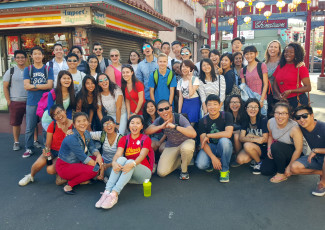Leaders: Are You Hiring Minorities?
By Emily Rogan
March 4, 2016
The importance of having a diverse faculty and staff and how the administration can play a role.
According to the latest data reported in the Digest of Education Statistics, the percentage of black and Hispanic faculty members at public two-year colleges increased from 5.8 percent and 3.5 percent in 1995 to 8.1 and 5 percent in 2011, respectively. But with a population of 14 percent black students and 19 percent Hispanic students, community colleges lack a proportional representation of minority faculty members.
“Community colleges have the highest concentration of students of color, low- income and first-generation students, a demographic that’s wildly different than that of four-year institutions,” says J. Luke Wood, Ph.D., associate professor of community college leadership and the director of the doctoral program in community college leadership at San Diego State University. “Having a diverse faculty — someone who looks and reflects like them — is important.”
According to Wood, faculty members of color tend to have a greater level of engagement, are often more involved in service at the institution and tend to mentor more students of color. “It helps create a more level playing field for the students,” Wood says.
Better recruitment practices
Wood believes there are two primary reasons why there isn’t greater representation of minority educators at community colleges:
- Diverse candidates aren’t being sought. When the process involves current faculty members networking with colleagues and peers, and they aren’t people of color, the options are limited. “There’s no real intentionality to make the pool diverse,” Wood says. “You have to actively seek out diverse faculty members where they are.”
- They aren’t being hired. Why? There’s an unconscious bias; people tend to hire candidates who are most like them, Wood suggests. Meanwhile, some people say there aren’t enough qualified candidates and that it’s too difficult to get them to apply. But Wood challenges that notion: “I don’t believe that argument,” he says. “I think it’s a lack of commitment to hire diverse faculty.”
How can colleges start seeking out these candidates? Connect with journals and professional organizations specific to people of color, such as Diverse: Issues in Higher Education, the Journal of Blacks in Higher Education and the American Association of Hispanics in Higher Education; recruit at conferences; and reach out through minority faculty on campus. It’s important to build relationships before there’s a need to hire, communicating with minority scholars before they apply, Wood says. “It’s partly the advertisement and partly the direct reaching out,” he says. “When colleges do these things, they get a diverse, qualified pool.”
Minorities serving as role models
As community colleges work to hire more minority faculty members, there are ways to help existing educators more effectively teach students of color. “We believe in intensive, ongoing professional development for all full-time and part-time faculty, training in how to teach underserved populations, including those of color,” Wood says.
Wood’s organization, The Center for Organizational Responsibility and Advancement, provides online training for community college educators to improve their strategies and abilities to serve underrepresented students, particularly men of color.
The integration of early alerts and the intrusiveness of mandatory tutoring and advising are examples of how community college educators can help students of color persist and succeed, Wood says. Educators need to understand that if such services are optional, students might not seek them out for fear of being seen in a negative light, he adds.
Rather than focus on “fixing” students, Wood says, educators should be asking, “What are we doing or not doing as a department or instructor for our students of color who aren’t doing well?”
The best medicine for the challenges that underserved students face, Wood says, “is an education that allows economic upward mobility.”






